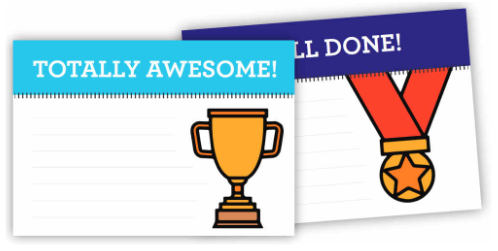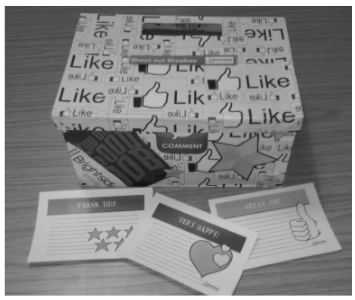Kudos are a very effective tool for encouraging team members to be motivated. If we put them into practice well, they are one of the most sincere and grateful tools we can ever practice.
In the work of all team members (not just the technicians, but all the management and stakeholders involved) we often have a certain tendency to focus on solving problems, without focusing on what has been done well and on individual and team successes. In addition, and especially in agile environments, in compliance with the multidisciplinary nature and flexibility that is desirable for all team members, we can do things in our daily lives that initially might not be ours to do.
It seems obvious for all these reasons that we try to find a space to appreciate the collaboration and the good attitudes that we all look for in ourselves and our colleagues (constructivity, positivity, flexibility, attention to quality, assertiveness, etc.). Kudos are this space for mutual recognition of our work within a team and a project. It is a powerful tool for fostering motivation and a culture of recognizing the work of others.
Kudos do not seek to recognize a result by a team member, but an attitude that has led to that result, taking into account that the results are the team’s and not the people’s. Especially in agility, where results are obtained from the collaboration and joint work of several people.
Kudos are designed to thank, but to thank in a special way, which is publicly. Public thanks have a powerful and more effective force than private thanks. They involve not only the gratitude itself, but the public recognition of the recipient.
Kudos are multidirectional. They are not designed only for bosses to congratulate technicians, but so that there are congratulations in all directions of the hierarchy. Possibly, in some situations, sincere gratitude from a teammate is more valuable than that from a manager.
Kudos are convenient in meetings where we seek either the evaluation of the work done or the challenges achieved, or in meetings where we seek ways to improve to work more efficiently or with greater quality within the project. Therefore, within the Scrum framework, we can apply this tool in Sprint Retrospective meetings](/articles/retro/), or in motivation meetings.
Kudos are cards that a person on the team (or external to the team) addresses to another person on the team (any team member including stakeholders). They are individual cards with a single sender and a single recipient.

The cards can have motifs or drawings that allow an idea of the reason for the thanks. And it must have enough space to write the thanks and the name of the recipient.
There are several strategies for getting these cards to their recipients. This is where the imagination of the organizer of the motivational meeting, or the Scrum Master in a Sprint Retrospective, comes into play.
It can be agreed if it is considered appropriate that the sender of the card can be anonymous. Although the recipient of the kudo is often convenient for a person on the team, since kudos to the team as a whole have a smaller effect.
The way in which the recipient receives a kudo card is very diverse. It can be agreed that the cards are hung on a wall, or placed in a box or mailbox, and a person in the room distributes the cards. Or a more direct way, where the sender delivers the card to its recipient.
This motivational activity is usually accompanied by a previous session where the project situation, successes and, why not, areas for improvement are explained. To then carry out this activity, which usually lasts 20-30 minutes.
As we said before, the activity aims to congratulate a team member for a job well done. To congratulate them for their involvement, their willingness, the quality of the work done, etc.
It is a very open activity that can be developed in multiple ways. The objective is to send a greeting card to a team member who deserves it. The imagination lies in the form.
It is important to explain to the members that making the kudo can be a task that they carry out throughout the days, and not necessarily in the meeting. A box (kudo-box) can be placed to deposit the kudos that will later be distributed in the session. Or we can do a first round in the same session where people who want to can write a kudo to the recipient they want.

An example kudo-box. In face-to-face work environments, it is common to place the box near the entrance door of the office or department, so that people who make a kudo card can deposit it when passing by the box, discreetly.
In teleworking environments, a kudo email address can be created (for example kudo_projecte_X@organization.com). People who want to send a kudo card simply write an email to this address.
Once we have kudos to send to recipients, we can choose from several alternatives:
The strategy we finally use will be very consistent with the level of knowledge of the team and the trust of its members.
It is important to explain to members that kudos are not given for trivial reasons, but should always be a sincere recognition of the work done by another person who has benefited us, improved our work or simply helped.
It is not advisable to use the information provided by kudos to create a sort of ranking of the most or least congratulated. We do not want the congratulations to become a competition. This would hinder the sincere attitude necessary to give the congratulations.
La técnica Kudo Box para motivar… sin tener que usar el dinero javiergarzas.com (https://www.javiergarzas.com/2014/10/kudo-box.html)
Kudos Reconocimientos Entre Compañeros De Trabajo Giovanni Cifuentes http://giovannycifuentes.com/kudos-reconocimientos-entre-companeros-de-trabajo/